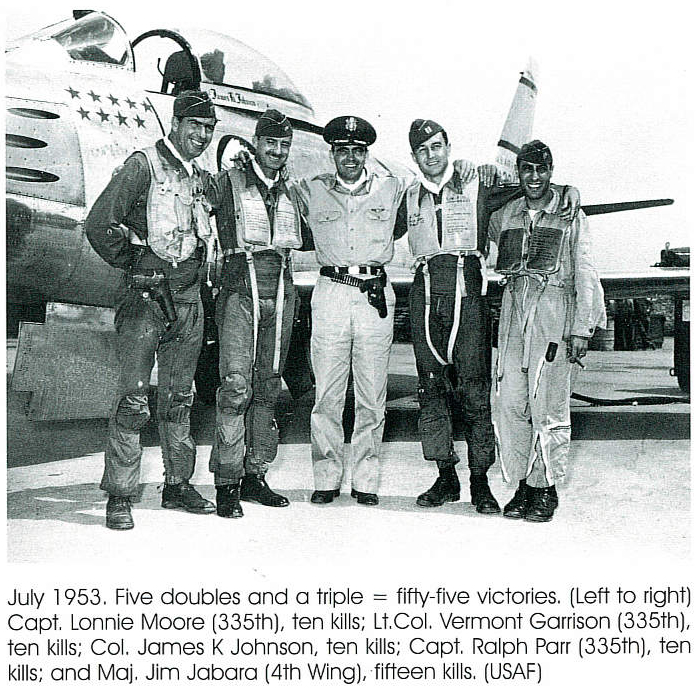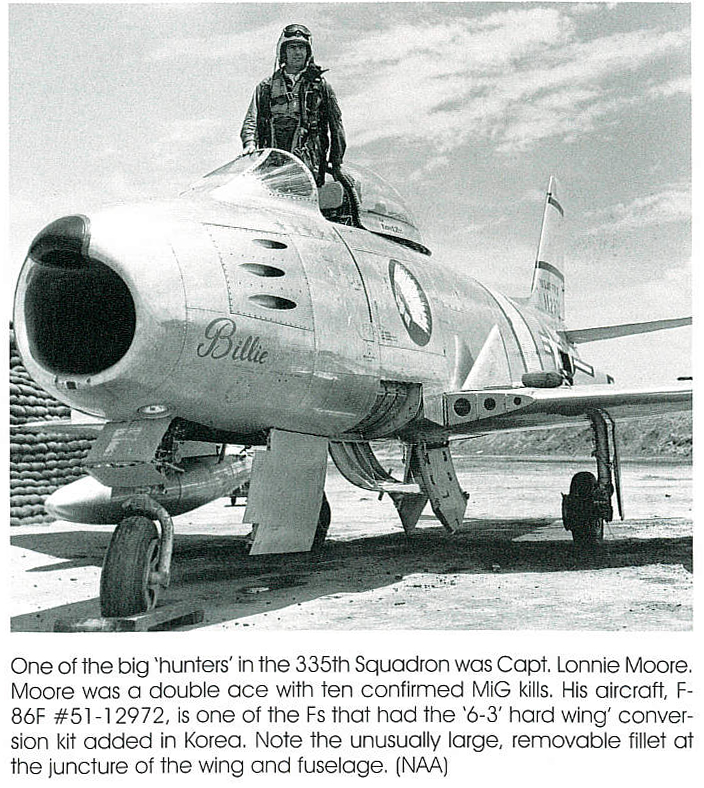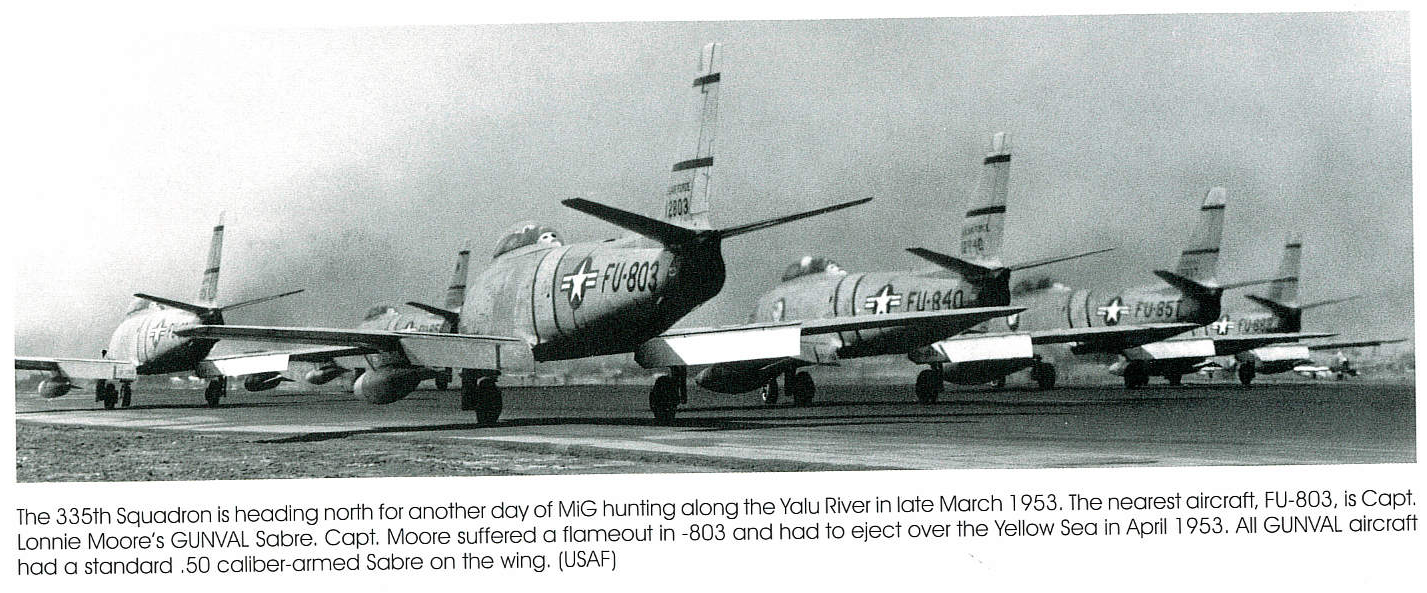It was the April of 1953
and the Ace’s voice was clear and strong as it rang out over
the radio. “Billie” had been hit and she was going down
into the freezing Yalu River located at the border of North Korea
and China. The Ace bailed out of the jet and had but a few minutes
of survival in the frozen Yalu. The rescue team, with only minutes
to spare, plucked the 33rd Jet Ace from the icy waters.
source:
CAPTAIN LONNIE MOORE, 10 JET ACE - THE STORY OF A CHIEF AND HIS DANCER
by
Joyce C. Fuller, Esq. © 2005

"Fourth But First"
was the motto of the Fourth Fighter Interceptor Wing, the most famous
United States Air Force outfit during the Korean conflict. They remained
top of their game from December 15, 1950, when the "Fourth"
first went into action, until July 27, 1953, when the Truce was signed.
The MiG-Killers of the "Fourth" destroyed more enemy aircraft
than any other Air Force unit in Korea.
On July 10, 1953, MiG mark
700 was passed and once again it was a "Fourth" pilot who
made the kill. But at the time the exact pilot is not known because
kills #699 and #700 came so close together that they could not be
separated. Capt. Lonnie R. Moore and his wingman, 2 nd Lt. William
F. Schrimsher, of the Chiefs Sq., made the two kills.
Capt. Lonnie R. Moore went
home to Florida to his beautiful loving wife Billie and their growing
family as a 'Double Ace' with 10 confirmed kills. Of the 1700 fighter
pilots in Korea only a few elite pilots held this honor of being called
a America's "Double Ace." On Jan. 10, 1956, while on the
first operational test run of the new F101 Voodoo Supersonic Jet at
Eglin Air Force Base, in NW Florida, the Double Ace’s plane
crashed right after takeoff. - DoubleAce website
On January 10, 1956, Major
Lonnie R. Moore, a Korean War ace with 10 kills to his credit, was
killed in a F-101A pitch-up mishap at Eglin AFB, Florida.
Source: http://www.ejection-history.org.uk/PROJECT/Biographies/M/Moore_Lonnie/Moore_Lonnie.htm

(The 4th Fighter
Wing in the Korean War - Larry Davis)








